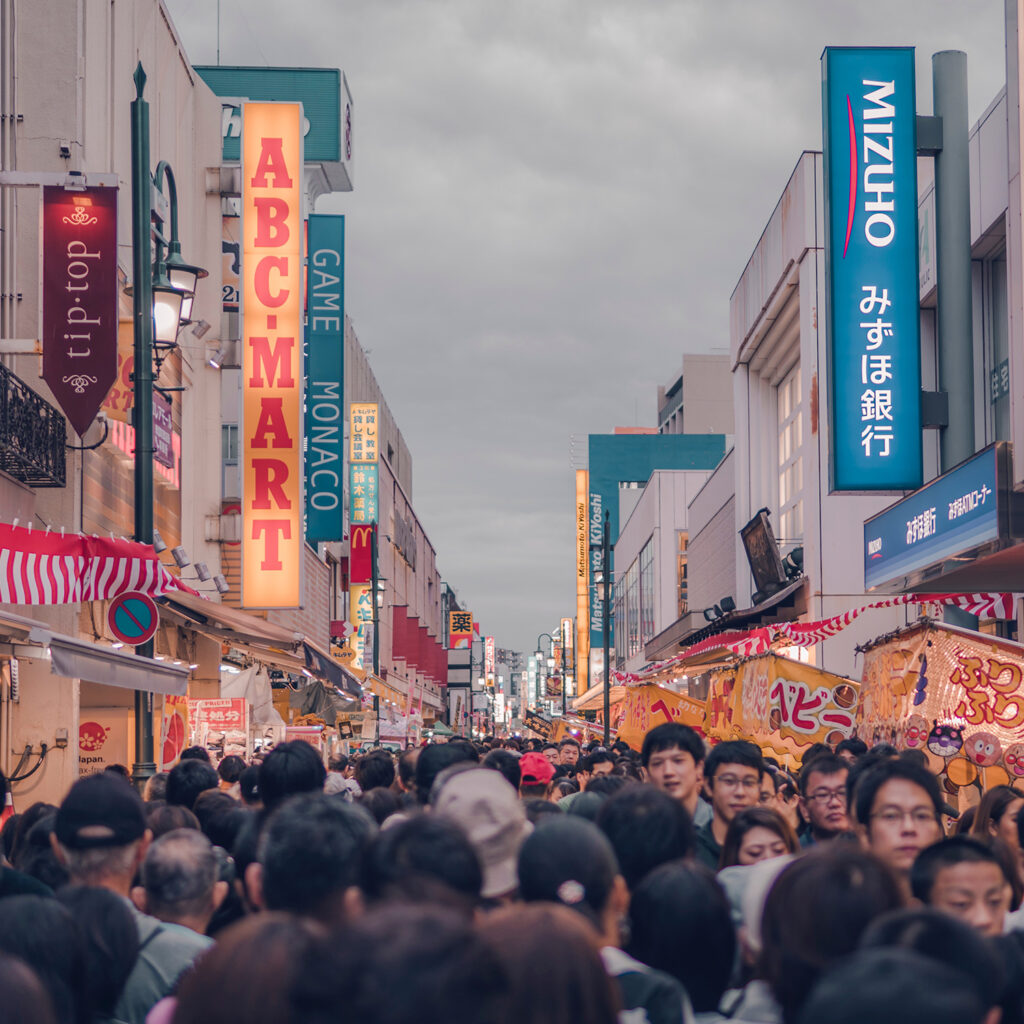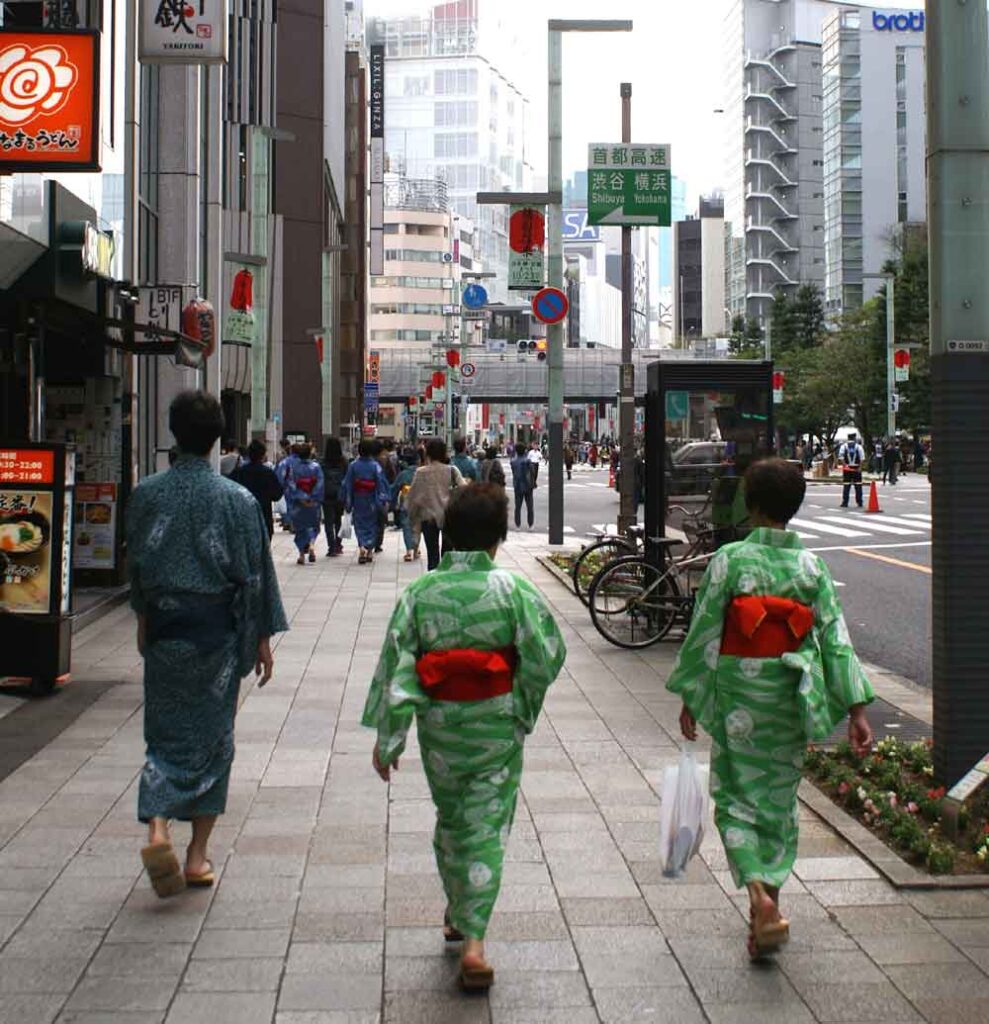Japan is a sparsely populated country, with approximately 126 million people in 2021. Japan’s population is concentrated mainly in major cities such as Tokyo, Yokohama, Osaka and Nagoya. Tokyo, Japan’s largest city, is considered one of the most populous metropolises in the world with a population of approximately 13.5 million people. Its density of 342 inhabitants per km² is very high (17th rank), but can reach more than 5750 inhabitants per km² in Tokyo, making its agglomeration the most populated in the world (35 676 000 inhabitants). It is on the island of Honshu, the largest of the archipelago, where we find the majority of Japanese (about 100 million inhabitants). More than 50% of the population lives on 3% of the country, in urban areas.
The demography of Japan is characterized by an aging population, with an increasing proportion of elderly people in relation to the total population. This is due to a relatively low birth rate and a very high life expectancy, which is one of the highest in the world. Since 2005, the Japanese population has been decreasing (2009: – 183,000 people) and aging (more than 4,500 centenarians in 2010 and people over 65 years old represent 23%). In spite of aid encouraging the birth rate, the fertility rate of 1.35 per woman, much lower than the necessary rate of 2.1 for the renewal of the population. According to a study published by the Japanese government in January 2012, the Japanese population is expected to fall below 100 million by 2050 and even 86 million by 2060.
Japan is also a highly urbanized country, with nearly 90% of the population living in urban areas. However, there are still small rural communities scattered throughout the mountains and islands of Japan. In terms of population distribution, Japan is divided into 47 prefectures, each with its own capital, cultural and economic characteristics. Most prefectures are located on the main island of Honshu, while the other islands, such as Hokkaido, Kyushu, and Shikoku, have smaller populations
The foreign population in Japan
In 2021, the foreign population in Japan is estimated to be about 2.3 million, or about 1.8% of the total population. Foreigners come from many different countries, with a large concentration of Chinese and Filipino nationals. Il y a également une présence importante de citoyens sud-coréens, américains, brésiliens et vietnamiens au Japon. La population étrangère au Japon est en augmentation depuis les années 2000, avec l’arrivée de travailleurs immigrés et de personnes venant étudier ou vivre au Japon pour des raisons personnelles. La plupart des étrangers au Japon vivent dans les grandes villes, telles que Tokyo et Osaka, où ils travaillent souvent dans les industries de la construction, de la restauration et du divertissement.
Japan has adopted policies to encourage immigration and integration of the foreign population, although this remains a challenge due to the emphasis on tradition and cultural homogeneity in Japan. Despite this, foreigners have helped to diversify Japanese society and strengthen the country’s international ties.
Here are the 10 largest cities in Japan in terms of population in 2021:
- Tokyo – 13,515,271
- Yokohama – 3,738,623
- Osaka – 2,736,134
- Nagoya – 2,296,946
- Sapporo – 1,971,295
- Kobe – 1,541,445
- Kyoto – 1,471,281
- Fukuoka – 1,587,276
- Kawasaki – 1,485,299
- Saitama – 1,266,657



